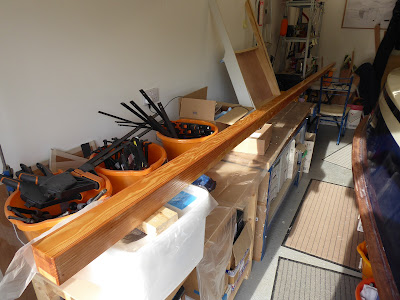While varnishing various components I found once again that I had time on my hands. This is because each coat of varnish takes just minutes to apply, but has to be left overnight to dry.
So I decided to restart work on the companionway and tabernacle, which would save time in the future.
Here I have applied a third coat of primer to the outside faces of the companionway hood and the tabernacle.
And here is the companionway slide receiving the same treatment.
The primer was rolled on and tipped out with a foam brush, which is now my only method of application.































